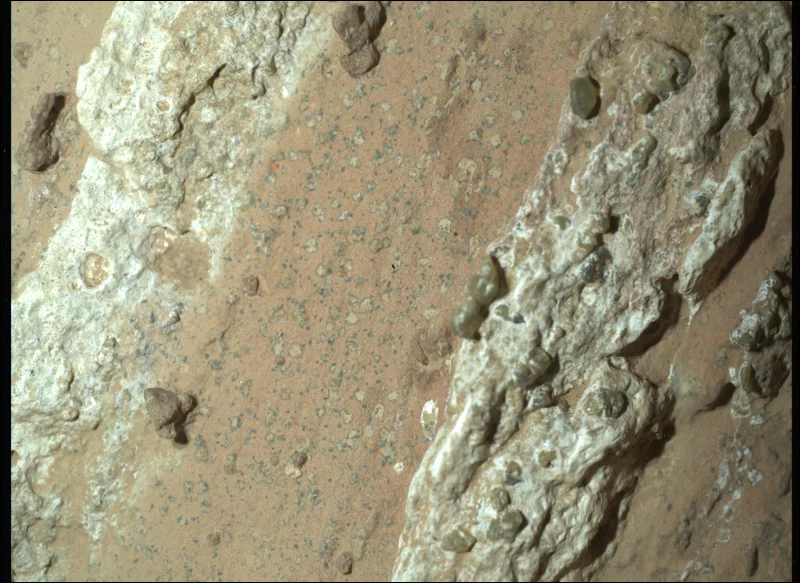NASA’s Perseverance Rover has uncovered unusual rock formations on Mars that may represent the strongest hints yet of ancient microbial life on the Red Planet.
The rover, which has been exploring an ancient riverbed in Jezero Crater, discovered mudstones marked with curious textures resembling “leopard spots” and “poppy seeds.” Scientists say these features are made up of minerals that may have been formed through chemical reactions linked to microbial activity billions of years ago. While natural geological processes could also explain the findings, NASA officials say the patterns meet the agency’s criteria for “potential biosignatures” — features that warrant deeper investigation into possible biological origins.
“This is unlike anything we’ve seen before,” said Professor Sanjeev Gupta, a planetary scientist at Imperial College London and co-author of a new study published in Nature. “If these rocks were on Earth, we might explain them through microbial processes. We’re not saying we’ve found life, but this gives us something compelling to pursue.”
Dr. Nicola Fox, Associate Administrator for NASA’s Science Mission Directorate, added at a press briefing: “It’s like looking at a leftover fossil — maybe it was a meal, maybe waste from life processes. That’s what makes this discovery so intriguing.”
Perseverance has so far collected 30 samples, storing them in sealed tubes for a future mission to retrieve. Scientists believe bringing the rocks back to Earth would allow them to use highly sensitive instruments to determine whether the minerals and textures are biological in origin. However, NASA’s plans for a Mars Sample Return mission remain uncertain. The project, which could cost billions of dollars, has faced delays and budget concerns, with the White House earlier this year questioning its financial sustainability.
Despite these challenges, NASA leaders remain committed to pushing forward. “We believe there’s a better and faster way to get these samples back,” said acting NASA Administrator Sean Duffy, noting that options are still being explored. He added that the work on Mars ties directly into NASA’s broader ambitions for future crewed missions: “What we do on Mars helps shape what we’ll do when we return to the Moon — and eventually, when humans set foot on Mars itself.”
For now, the rocks in Jezero Crater offer the most tantalising window yet into the possibility that Mars may once have supported life. Whether these patterns represent the planet’s geological quirks or traces of something more extraordinary will depend on the next phase of exploration.




